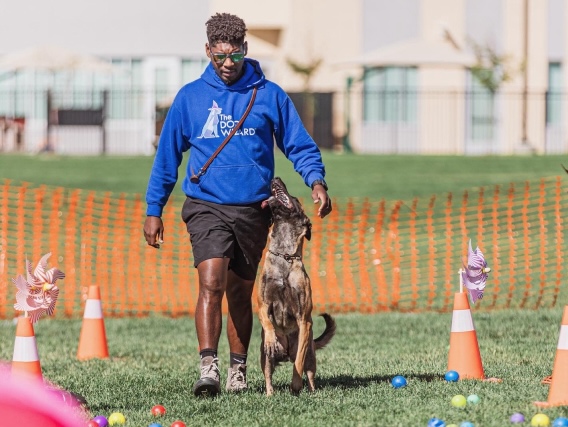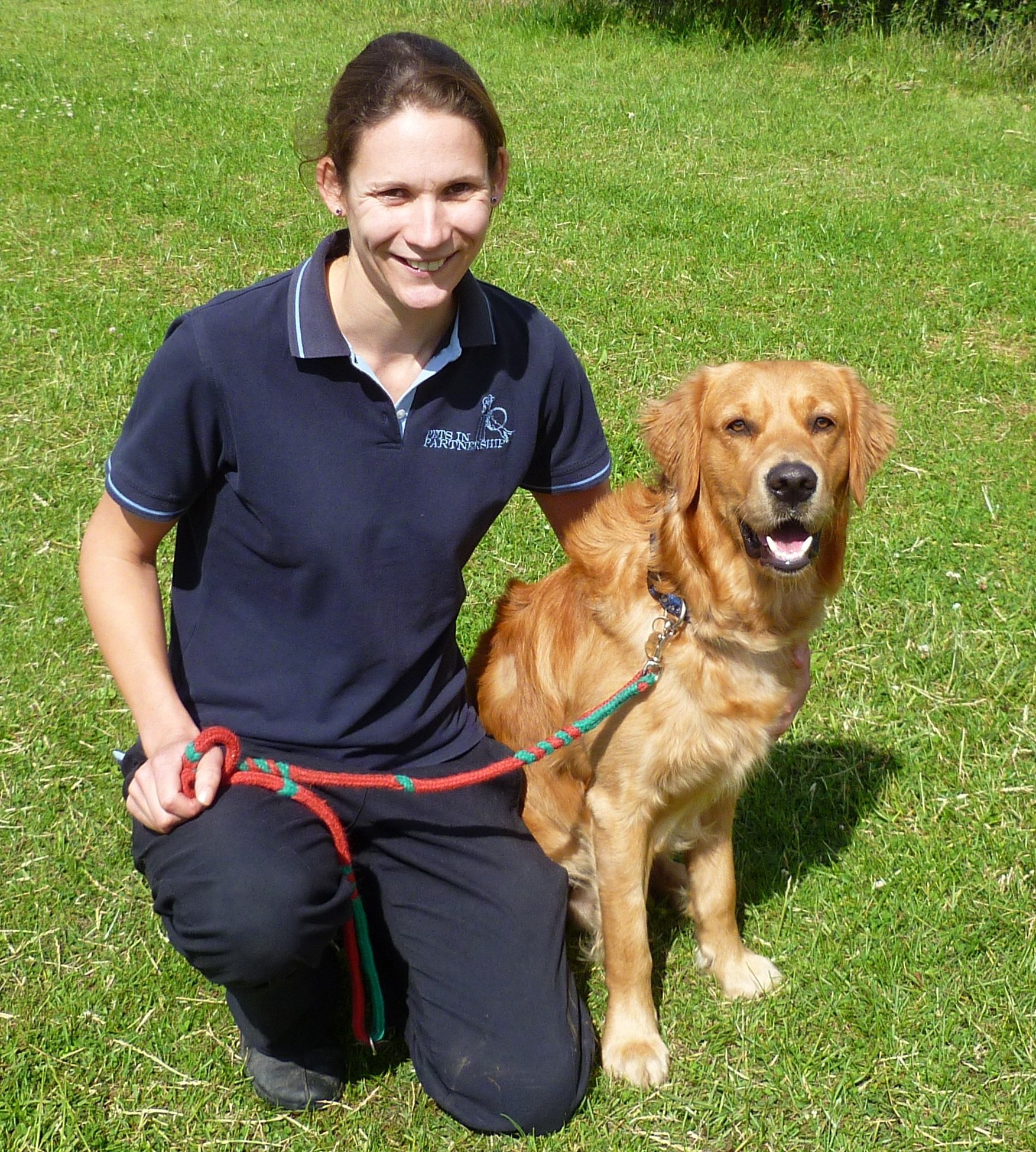Common Mistakes to Avoid During Dog Training for Better Results
Common Mistakes to Avoid During Dog Training for Better Results
Blog Article
Novice's Guide to Successful Pet Dog Training in the house
Efficiently training a canine at home needs a nuanced understanding of canine habits and reliable interaction strategies. Establishing clear training objectives, making use of premium incentives, and preserving consistency across relative are vital aspects. Moreover, integrating training right into day-to-day routines can improve both involvement and retention. Numerous beginner fitness instructors experience difficulties that might impede progress. To browse these intricacies efficiently, it's vital to check out numerous vital aspects that can change your approach and result in an unified relationship with your pet. What essential principles should every novice grasp to make certain success?
Comprehending Canine Actions
Understanding canine habits is essential for reliable training and promoting an unified partnership in between human beings and their canine friends. Pet dogs communicate mainly via body movement, articulations, and face expressions, making it essential for proprietors to interpret these signals accurately. Identifying habits such as tail wagging, grumbling, or cring can provide insights into a pet's emotional state and intents.

Common behavioral concerns, such as aggressiveness, stress and anxiety, or too much barking, typically come from misunderstandings or unmet needs. Observing and attending to these issues without delay can protect against rise and ensure a positive training experience. By fostering a deep understanding of pet dog habits, proprietors can tailor their training approaches to suit their canine companions, inevitably bring about a well-behaved and contented pet dog.
Essential Training Tools
A well-appointed training room can considerably improve the effectiveness of pet training in your home. Crucial training tools ensure that both the trainer and the pet dog can take part in effective sessions that cultivate discovering and bonding.

Spending in a sturdy leash and a comfy, well-fitting collar or harness is important for security and control. These devices aid establish boundaries and guarantee the dog continues to be safe and secure throughout training. Additionally, a designated training location, without distractions, aids concentration for both the pet and the instructor.
Educating aids such as training pads, cones, or agility tools can likewise boost the experience by presenting selection and difficulties. Having a notebook or digital app for tracking development can be vital, enabling you to keep in mind successes and areas for improvement. Using these necessary devices will certainly create a positive training environment and lay the structure for efficient understanding.
Creating a Training Regimen
Developing a constant training routine is important for effective pet training at home. A well-structured routine not only helps in strengthening preferred behaviors but likewise provides your dog with a feeling of safety and security and predictability. To develop an efficient training regular, start by identifying certain training objectives, such as fundamental commands, leash walking, or housebreaking.
Select a designated time daily for training sessions, ideally when your dog is sharp and receptive. Procedure needs to be short, about 5 to 15 minutes, to maintain emphasis and protect against fatigue. Consistency in timing and environment will certainly enhance your dog's learning experience.
Incorporate training into day-to-day tasks to reinforce abilities. For instance, method commands throughout walks or nourishment, which incorporates learning into natural routines. Furthermore, continue to be adaptable and adjust the regular as needed, accommodating your pet's power degrees and mood.
Favorable Support Methods
Positive reinforcement methods are fundamental to reliable pet dog training, advertising desired actions via benefits instead of punishment. This method uses favorable stimuli, such as deals with, praise, or playtime, to motivate pets to repeat particular actions. The keystone of this technique is timing; rewards must be given immediately adhering to the preferred habits to create a clear organization.
When implementing favorable reinforcement, it is important to choose rewards that are motivating for your dog. High-value treats, such as small items go to this website of chicken or cheese, can be particularly effective during training sessions. Furthermore, varying the incentives can keep your pet dog's rate of interest and interest.
Start with straightforward commands, like "sit" or "stay," and progressively progress to extra intricate jobs. Consistency is vital; make certain that all member of the family use the very same commands and incentive systems to prevent complication.
In addition, it is vital to remain client and prevent stress. Pet dogs, like humans, find out at their own rate. By cultivating a helpful training setting through favorable reinforcement, you can enhance site your dog's knowing experience while enhancing the bond between you and your furry friend, laying the groundwork for effective training results.
Common Training Challenges
While training a pet dog in your home can be a rewarding experience, it typically comes with a collection of typical obstacles that can examine both patience and consistency. One common concern is distraction. Pet dogs may become easily averted by noises, motions, or even fragrances in their atmosphere, making it challenging to keep their focus throughout training sessions.
Another obstacle is variance in commands and reinforcement. It can puzzle the dog and prevent progress if household participants use different cues or benefits. Developing a unified method is essential for reliable communication.
In addition, pets can experience frustration or tension, especially if they do not recognize what is expected of them. This can result in unwanted actions, such as chewing or barking.
Finally, the timing of support is important (Dog training). Delayed incentives can reduce the efficiency of favorable reinforcement, as dogs may fall short to attach the actions with the benefit
Getting over these obstacles calls for commitment, clear communication, and a structured training strategy. Recognizing and addressing these usual barriers will certainly lead the way for a much more effective and enjoyable training experience in the house.
Final Thought
In verdict, successful canine training in your home necessitates an extensive understanding of canine actions and efficient interaction methods. By developing clear training objectives and using top quality deals with alongside positive support, the training process becomes a lot more satisfying for both the fitness instructor and the pet dog. Flexibility, consistency, and patience are essential parts that promote knowing. Inevitably, incorporating training right into everyday regimens boosts the bond in between dog and proprietor, making the experience both delightful and efficient.
Developing a consistent training regimen is vital for effective pet dog training at home.Favorable support methods are essential to efficient pet dog training, promoting wanted actions through rewards rather than penalty (Dog training). By promoting a supportive training setting with favorable reinforcement, you can enhance your dog's knowing experience while strengthening the bond between you and your fuzzy buddy, laying the groundwork for effective training results
In verdict, successful pet dog training at home demands a comprehensive understanding of canine habits and reliable interaction approaches. By establishing clear training goals and utilizing high-quality deals with along Check Out Your URL with favorable support, the training procedure comes to be extra rewarding for both the dog and the instructor.
Report this page